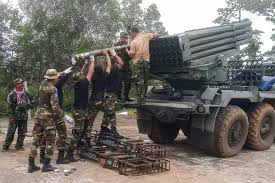Understanding the Thailand Cambodia Conflict: Recent Developments

Introduction
The conflict between Thailand and Cambodia has deep historical roots, primarily centered around territorial disputes and cultural differences. Recent tensions have escalated, drawing international attention due to the involvement of both governments and local populations. Understanding this conflict is crucial given its implications for regional stability in Southeast Asia.
Background of the Conflict
The conflict primarily revolves around the disputed area around the ancient Preah Vihear temple, which has been a longstanding point of contention since the colonial era. In 1962, the International Court of Justice ruled that the temple belonged to Cambodia; however, disputes over the surrounding land have persisted. This area holds significant cultural and historical value, leading to the feelings of nationalism on both sides.
Recent Developments
In recent months, tensions have resurfaced, particularly as both countries have ramped up military presence near the border. In August 2023, joint military exercises by Thailand were viewed by Cambodia as provocative, prompting diplomatic protests. Furthermore, nationalistic sentiments in both countries have led to aggressive media portrayals and public opinion against the opposing nation.
In a drastic move, local militia groups in Thailand have begun staging demonstrations near the border, demanding the government take strong actions regarding the ongoing disputes. Conversely, the Cambodian government has expressed alarm, warning about potential instigations that could lead to violence. Leveraging their historical ties with other Southeast Asian nations, Cambodia has started engaging with ASEAN (Association of Southeast Asian Nations) countries to mediate and discuss peaceful resolutions to the conflict.
Conclusion
The Thailand Cambodia conflict reflects a complex interplay of history, culture, and nationalism that continues to evolve. With local actions provoking national responses, the potential for escalation remains a critical concern for both governments and their citizens. As regional dynamics shift, the role of diplomatic resolutions through ASEAN may be increasingly significant. Stakeholders are urged to consider peaceful dialogues to prevent further aggravation of hostilities, as regional cooperation is essential for stability in Southeast Asia.









